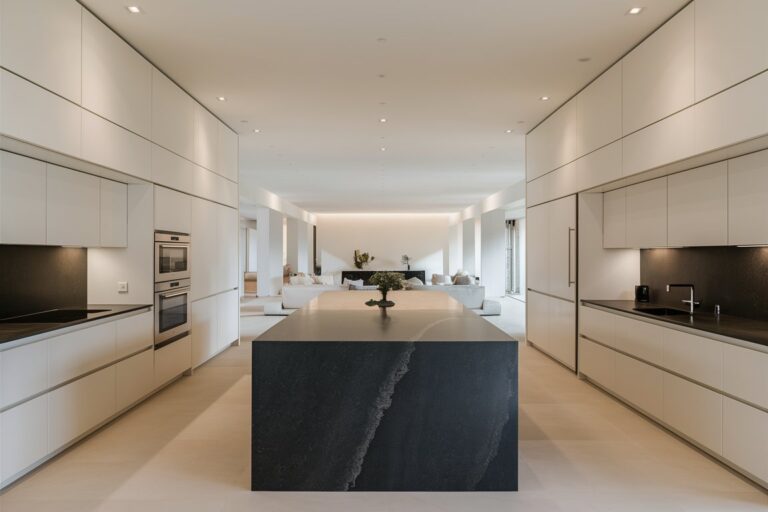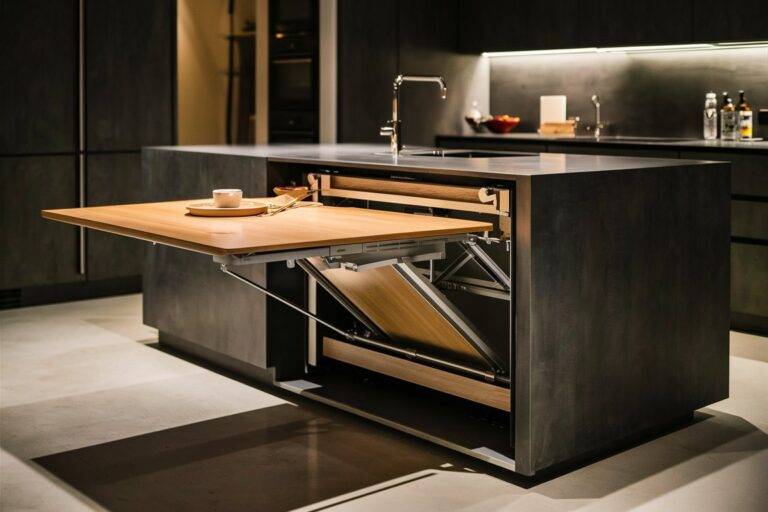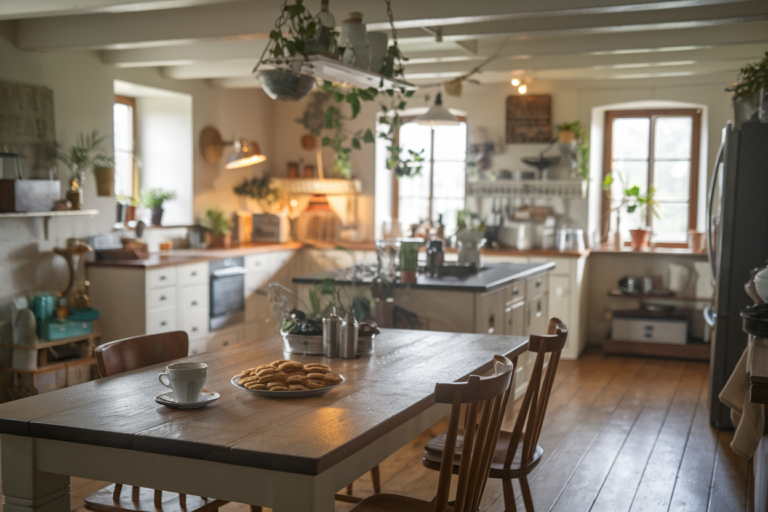The Ultimate Guide to Choosing a Farmhouse Kitchen Sink
This site contains affiliate links. I may earn a small commission, at no extra cost to you.
Let’s be honest—choosing a farmhouse kitchen sink shouldn’t feel like rocket science. But between the styles, materials, sizes, and the “wait…what’s an apron front again?” moments, it can get a little overwhelming. Been there. That’s why I put together this no-nonsense, totally human-friendly guide to help you pick the perfect sink without losing your mind (or your design mojo).
So, whether you’re renovating your dream kitchen or just ditching that stained old double-bowl disaster, this is the ultimate guide to choosing a farmhouse kitchen sink—complete with personal opinions, cheeky commentary, and all the must-know info.
What Exactly Is a Farmhouse Kitchen Sink?
Okay, first things first: if you’re picturing something out of a rustic country movie, you’re not far off. But the farmhouse kitchen sink (aka apron-front sink) has way more personality than your average basin.
Here’s what makes it stand out:
- Exposed front (aka the apron): That front panel that juts out? That’s the signature look.
- Deep single basin: You can soak a whole stockpot or bathe a small dog in there. (No judgment.)
- Classic, yet surprisingly modern: It works just as well in minimalist kitchens as it does in cottagecore dreams.
Why should you care? Because this sink doesn’t just wash dishes—it’s a centerpiece. And if you’re going farmhouse, go big or go home, right?
Materials Matter: Which One Should You Choose?
Let me guess—you thought all farmhouse sinks were just white porcelain? Yeah, nope. There’s a whole world of materials out there, and each one comes with its own pros, cons, and vibes.
🔸 Fireclay
This one’s the OG.
- Pros: Durable, stain-resistant, and has that classic glossy white look.
- Cons: Can chip if you go full Hulk with your pots. Also, kinda pricey.
- Perfect for: Traditional farmhouse kitchens or anyone who loves that bright, clean finish.
🔸 Cast Iron (Coated in Enamel)
Heavy-duty and old-school, in a good way.
- Pros: Heat-resistant and tough as nails.
- Cons: Weighs a lot. Like, you’ll need some serious cabinet reinforcement.
- Perfect for: Vintage lovers or anyone channeling those retro vibes.
🔸 Stainless Steel
Yes, even your ultra-modern soul can live the farmhouse sink dream.
- Pros: Sleek, easy to clean, and way lighter than cast iron.
- Cons: Scratches easily and can be noisy when you drop a fork (which you will).
- Perfect for: Industrial-modern kitchens or if you’re all about low maintenance.
🔸 Copper
Talk about making a statement 😍
- Pros: Naturally antimicrobial, gorgeous patina over time, totally unique.
- Cons: High maintenance and $$$.
- Perfect for: Bold designers, eclectic kitchens, or if you like your sink to be a conversation piece.
Size Does Matter (When It Comes to Sinks, Anyway)
Choosing the right farmhouse sink size is crucial, especially if you want it to be functional and not just “Pinterest pretty.”
Ask yourself:
- How big is your kitchen? Don’t cram a 36” beast into a tiny galley kitchen unless you want regrets.
- What do you cook? If you’re a “microwave meals and vibes” person, you don’t need a mega-deep sink. But if you roast, bake, meal-prep for an army? Go deep.
- Cabinet size? Most farmhouse sinks need custom or modified base cabinets. Double-check before you click “Add to Cart.”
Typical Sizes:
- 30”–33” – The sweet spot for most homes.
- 36”+ – For larger kitchens or serious home chefs.
- 24”–27” – Compact versions for small spaces.
Apron Front vs. Flush Mount: What’s the Difference?
This is where some people (okay, me) got confused at first. The apron front just refers to the exposed front of the sink—but the way it’s mounted can change everything.
H3: Apron-Front Install (Traditional Style)
- The sink front sticks out slightly from your cabinets.
- Bold, classic look.
- Requires a specially cut cabinet.
H3: Undermount or Flush Install
- Sits below or even with the counter.
- More seamless look, easier countertop cleanup.
- Slightly more modern feel.
IMO? Stick with the apron-front if you want that true farmhouse aesthetic. But flush can still look fab in transitional kitchens.
Single Bowl vs. Double Bowl: Let’s Settle This
The single-bowl vs. double-bowl debate is real. People have opinions. Strong ones.
🔹 Single Bowl
- Pros: More room, better for washing big stuff, looks cleaner.
- Cons: No divide = no multitasking unless you’re super creative.
- Best for: Bakers, entertainers, anyone who doesn’t wash dishes by hand daily.
🔹 Double Bowl
- Pros: You can soak and rinse at the same time. Super functional.
- Cons: Smaller space per bowl. Less visually open.
- Best for: Hand-washers or households that like keeping tasks separate.
Personally? I love the wide-open look of a single bowl. Feels luxurious—even when I’m scrubbing burnt pans from mac & cheese gone wrong 😅
What About Drain Placement?
Ah yes, the glamorous world of drain placement—because apparently, this matters too.
Center Drain
- Traditional
- Easy access, symmetrical
- Not great for under-sink storage
Offset Drain
- More room under the sink
- Keeps water from draining right where you’re working
- Slightly modern twist
If you’ve ever wrestled with your trash bin placement under the sink, you know how game-changing an offset drain can be.
Don’t Forget the Accessories
Farmhouse sinks aren’t just pretty faces—they’ve got tricks up their sleeves too. Some come with accessories that make your life easier (and your kitchen more Instagrammable).
Look for these bonus goodies:
- Bottom grids: Protect your sink from scratches and dents.
- Cutting boards or colanders: Slide them across the top and boom—instant workstation.
- Drain covers and baskets: Say goodbye to sad, gunky sink drains.
Pro tip: If your sink doesn’t come with these, buy them separately. They make a big difference.
Installing a Farmhouse Sink: What You Need to Know
Now here’s where people panic. Yes, installing a farmhouse sink can be a little more complicated than your run-of-the-mill drop-in. But don’t freak out yet.
FYI:
- You’ll probably need a custom cabinet or at least some modifications.
- Most are undermount or apron-front installs, so your countertop has to be cut accordingly.
- They’re heavy—especially fireclay or cast iron—so they need solid support underneath.
Tip from someone who’s been there: Hire a pro unless you’re super handy. And measure twice. Or, like, five times.
Style It Right: Farmhouse Sinks in Modern Kitchens
Here’s the cool part: you don’t have to go full-on “barn door and shiplap” to pull off a farmhouse kitchen sink.
Mix and match styles like a pro:
- Modern Farmhouse: Pair a fireclay sink with matte black hardware and subway tile.
- Rustic Industrial: Go for a copper sink with raw wood shelves and Edison bulbs.
- Coastal Chic: Try a white sink with light blue cabinets and brushed nickel accents.
Don’t be afraid to get creative. The farmhouse sink is surprisingly flexible—and not just in aesthetics. It’s the MVP of kitchen functionality too.
My Final Thoughts: Is a Farmhouse Sink Worth It?
Short answer? Heck yes.
Long answer? It depends on your kitchen, your lifestyle, and whether you’re cool with a little extra maintenance for a lot of extra style.
Personally, I’d choose my farmhouse sink again in a heartbeat. Every time I fill a huge pot, clean a pan without splashing water everywhere, or just stare lovingly at that apron front, I feel like I made the right call.
Sure, they take some planning. And yeah, you might have to say goodbye to your current cabinet setup. But IMO? It’s 100% worth the glow-up.
One Last Thought…
Ever stood at your kitchen sink and thought, “This could look better… and work better too”? That’s your sign, friend. Whether you’re planning a full remodel or just upgrading your sink situation, a farmhouse kitchen sink might just be the piece that transforms your kitchen from functional to freakin’ fabulous.
So go ahead—channel your inner Joanna Gaines, grab a tape measure, and start shopping smart. And when your friends compliment your dreamy new sink, just smile and say, “Oh, this old thing?” 😉





